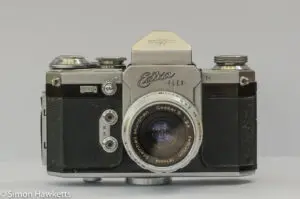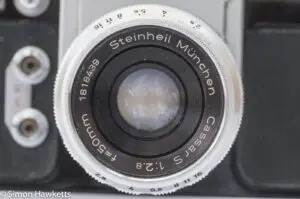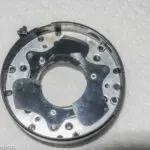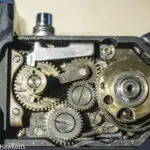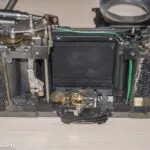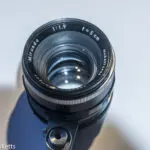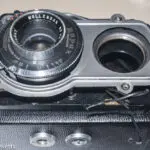This is a review of the Edixa Flex, a nice and quite old 35 mm SLR camera which I acquired a few days ago from eBay UK. The camera was made around about 1958 by the German manufacturer Wirgin and has quite a high feature set for a camera of its age. For example, the viewfinder and focusing screens are replaceable, and the shutter release button has a lock to prevent it being accidentally fired.
My Edixa Flex Camera
I found this camera on eBay by doing one of my normal searches I use to see if anything interesting comes up. I can't remember the exact search, but I remember seeing the description of 'Wirgin Edixa-flex camera - 1958' and thought it looked interesting because I'd not heard of the manufacturer before. When I saw it there was one bid for £5 and as it got closer to the auction completion the price went up, but I managed to get it with a bid in the last 5 sec of £21.
The general condition of the camera as I received it is generally quite good, although the pictures above make it look much dirtier than it really is.
Something which does need to be done is re-stick the body coverings because they are starting to peel at the edges. I wonder if this is a problem with the glue used by this manufacturer - once I bought this camera I did some more searches and a lot of Edixa cameras on eBay seem to exhibit the same problem.
Other than the general condition of the coverings, the other things which I know are wrong are that the mirror has some corrosion at the bottom edge, but oddly enough this doesn't show in the viewfinder at all.
The other issue is the second shutter curtain is sluggish at closing on the slowest speed and on B. If I open the back and release the shutter I can watch the first curtain snap across, and then the second curtain runs up to about halfway across the frame and then slows to a crawl, taking about 4 seconds to complete or even remaining open. I need to investigate why that is and see if I can fix it.
Pictures of the Edixa Flex
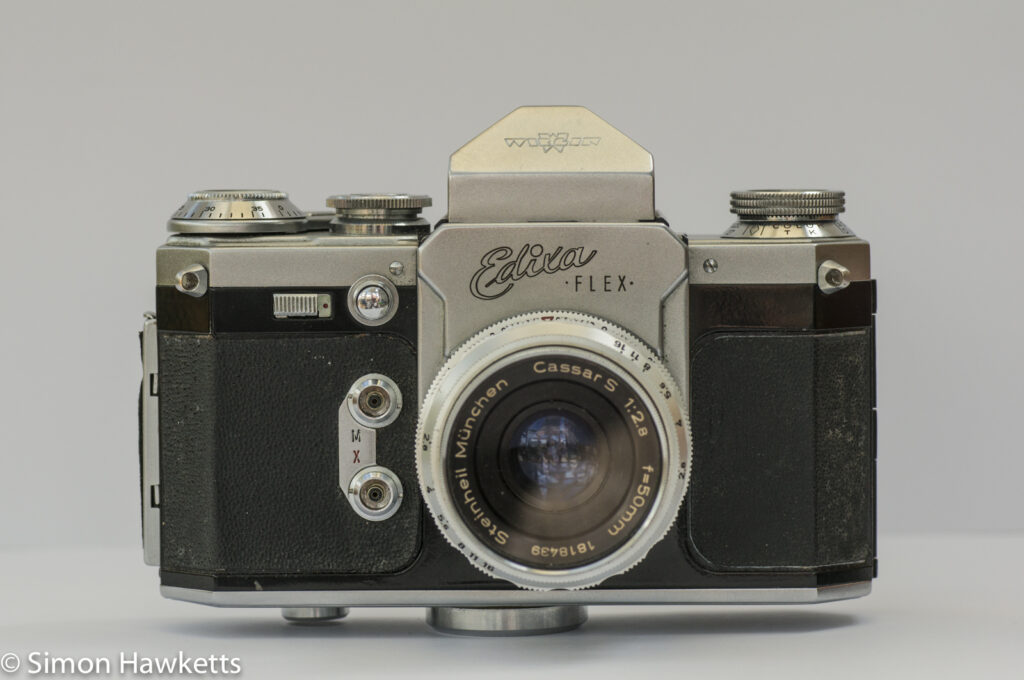
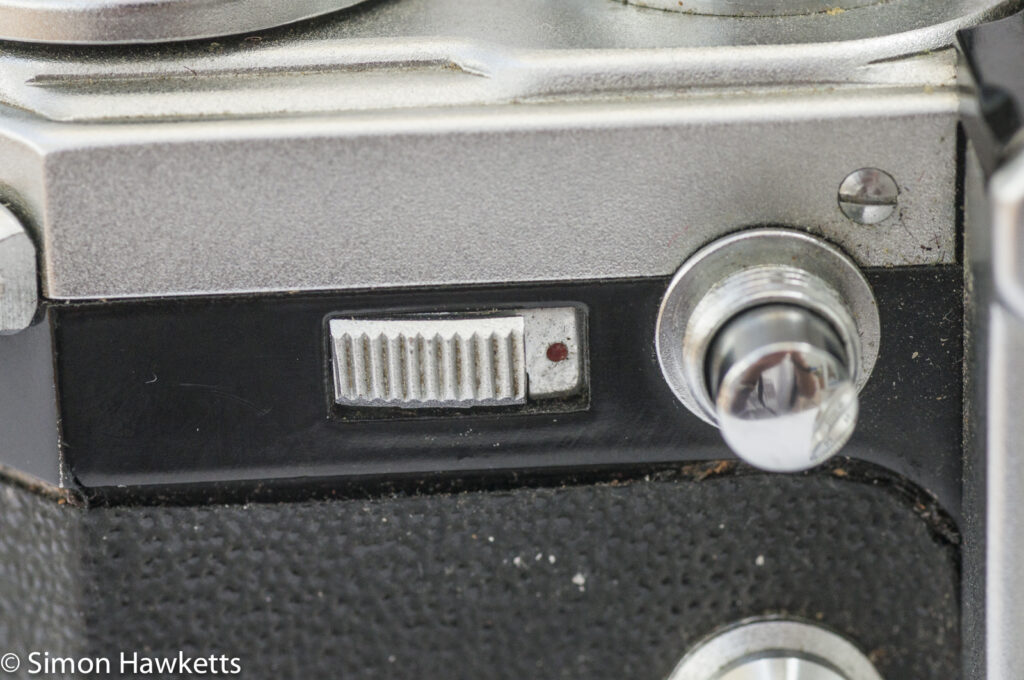

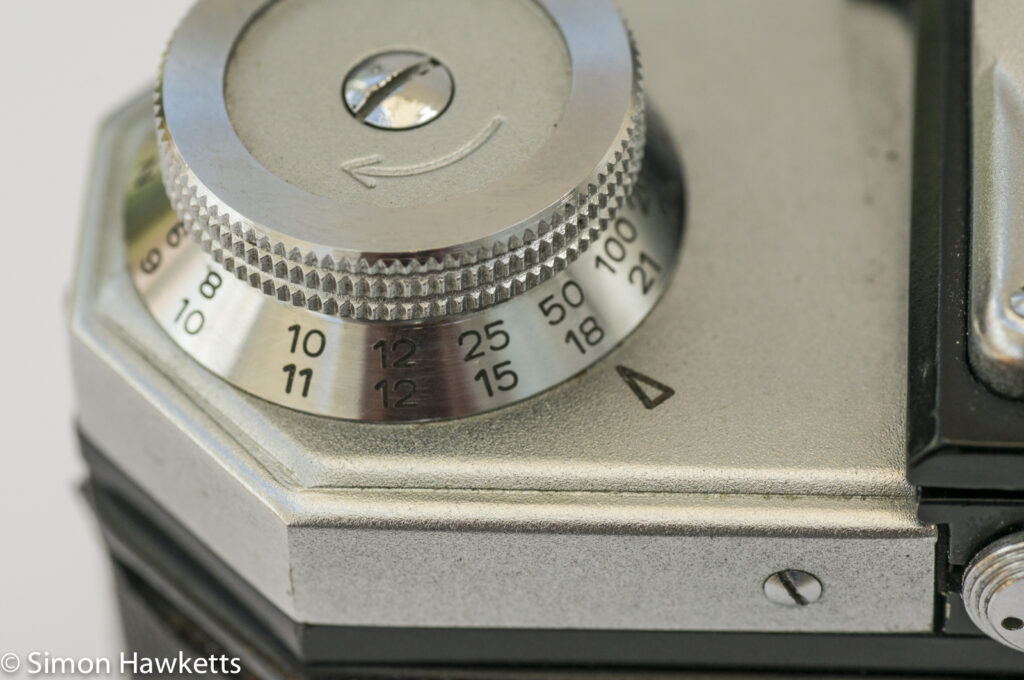

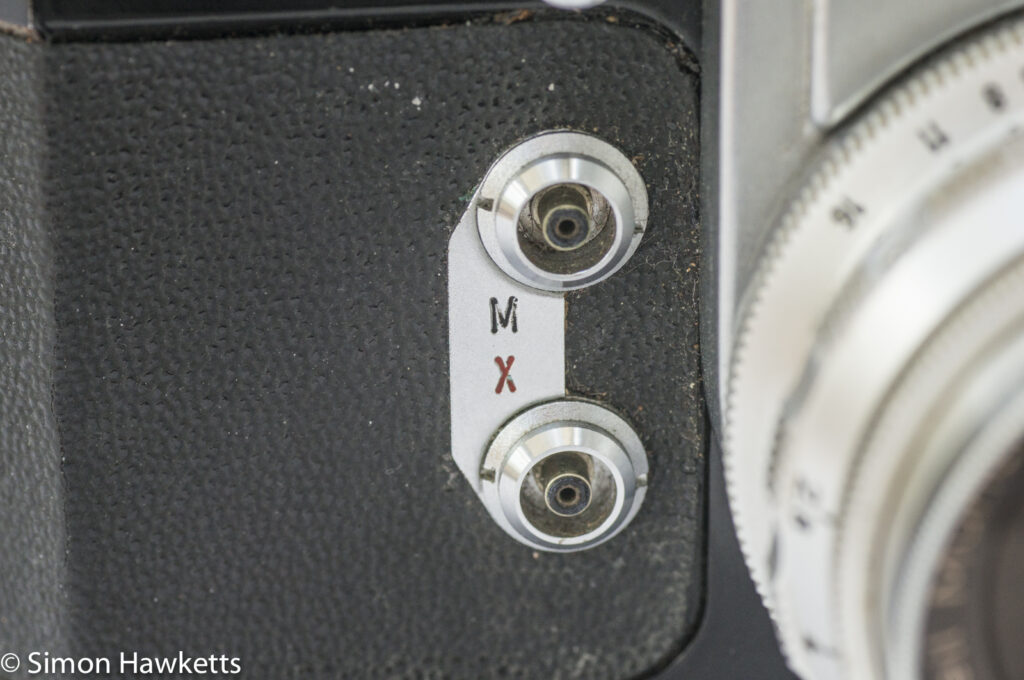

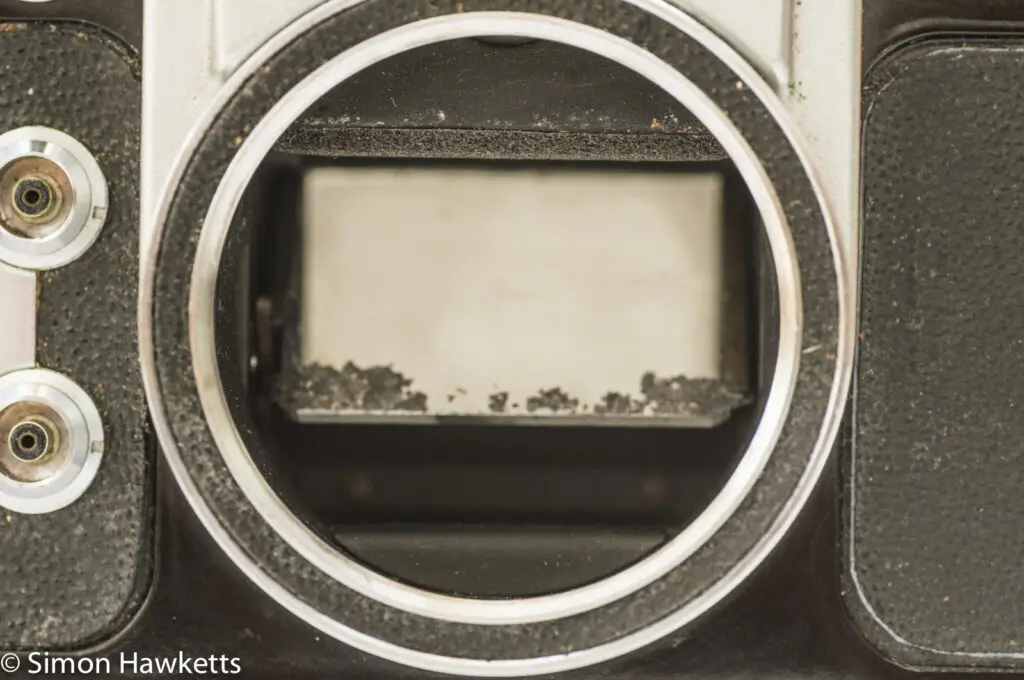
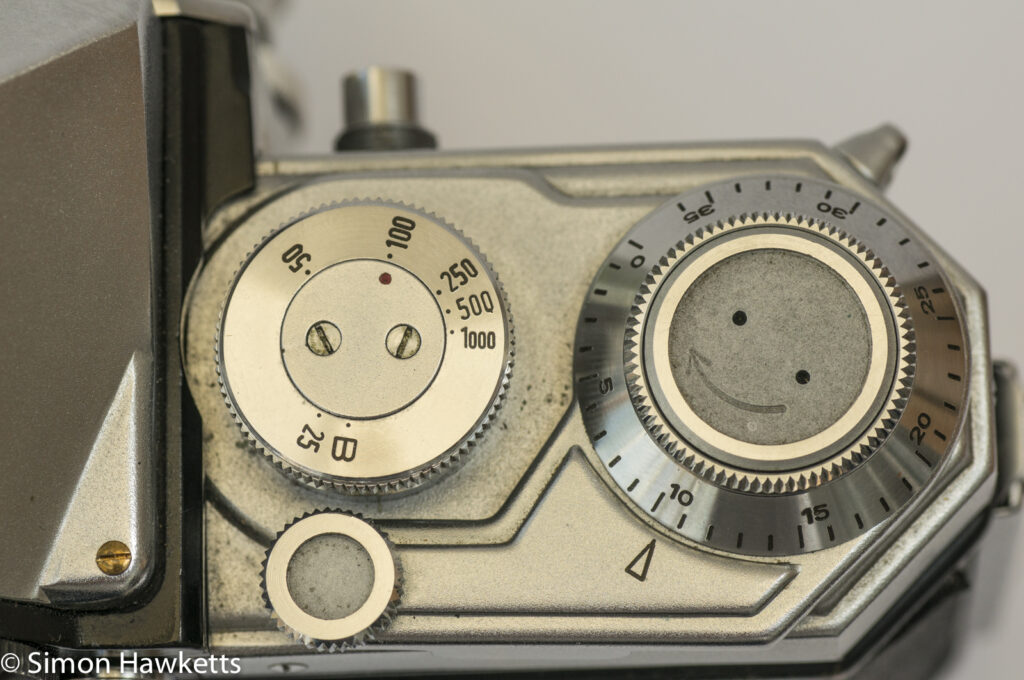
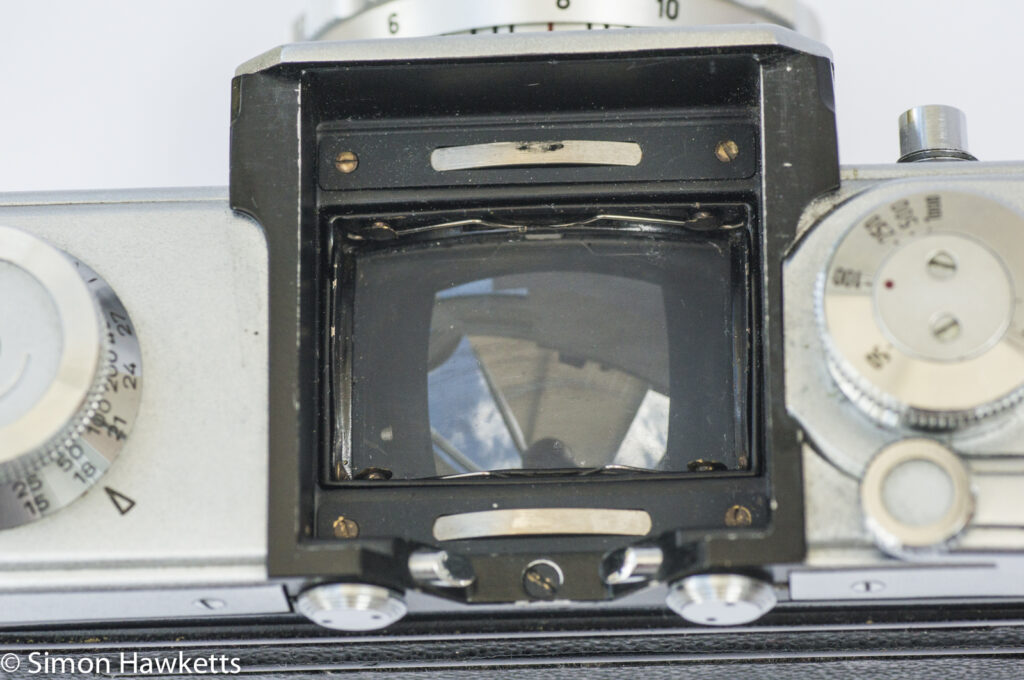

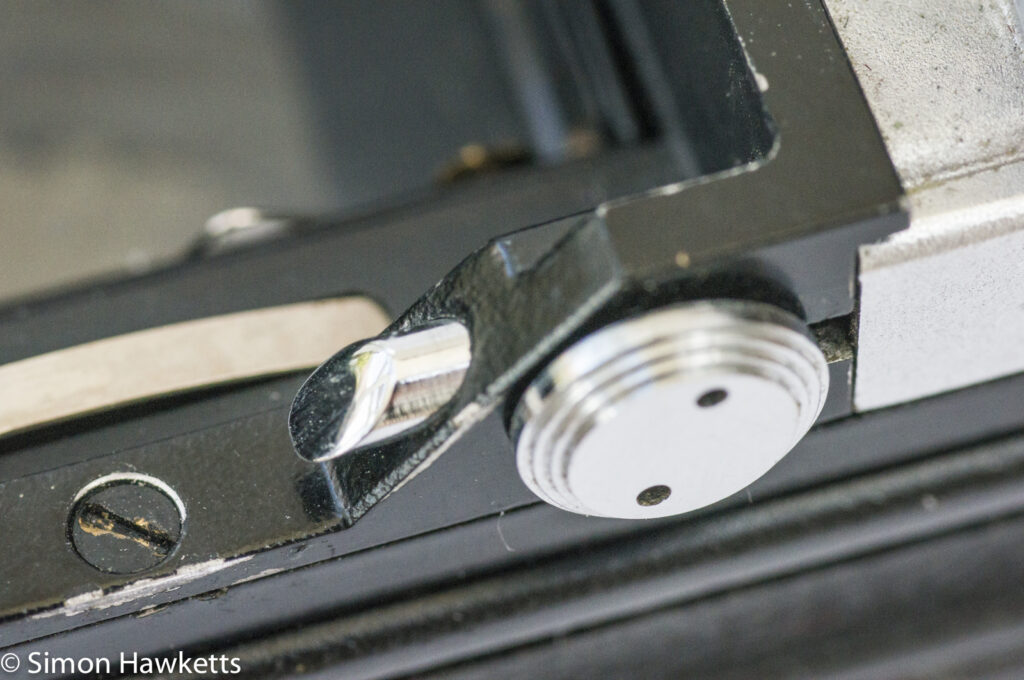
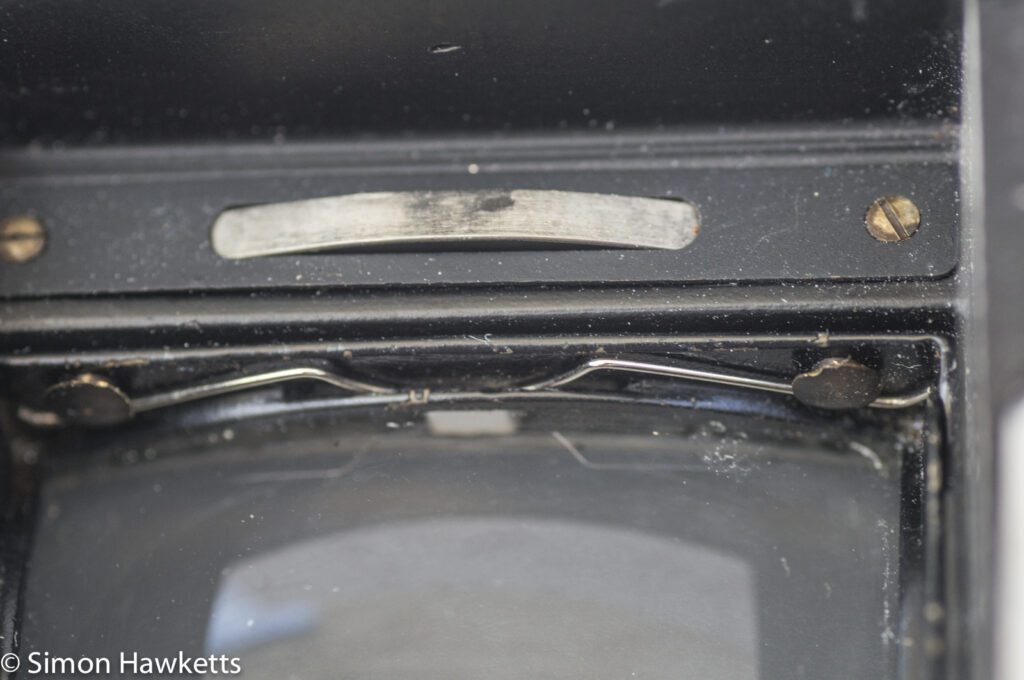

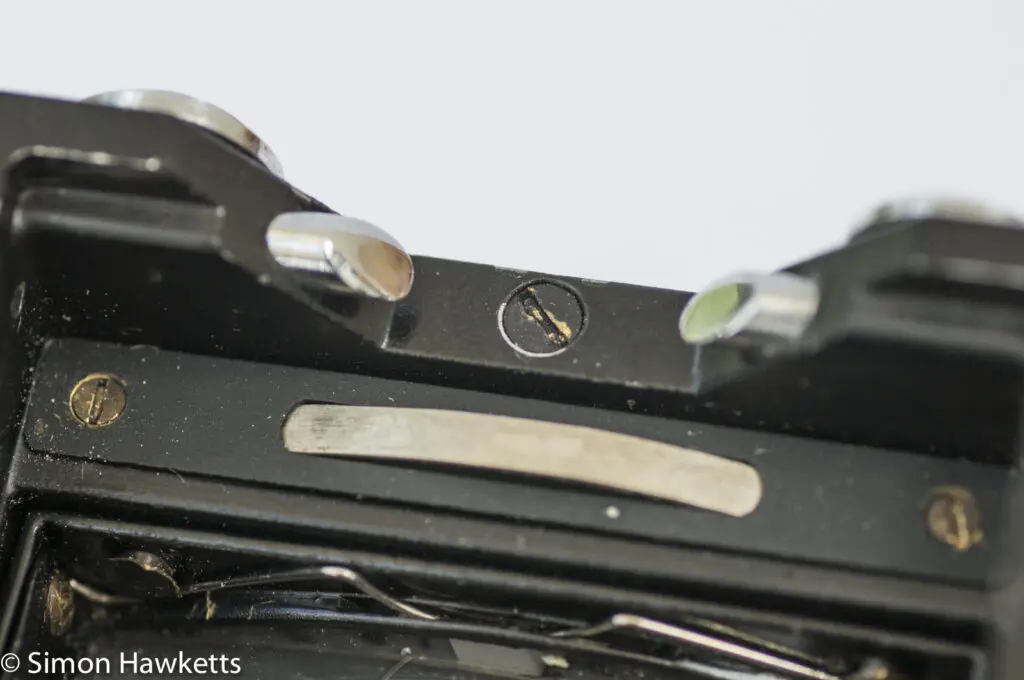
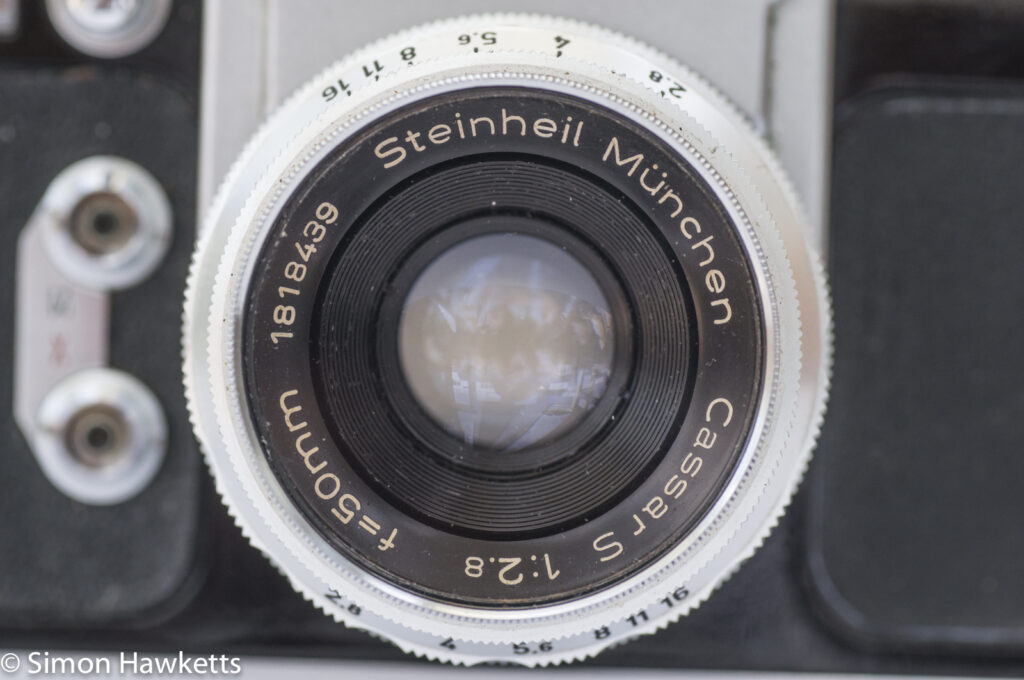

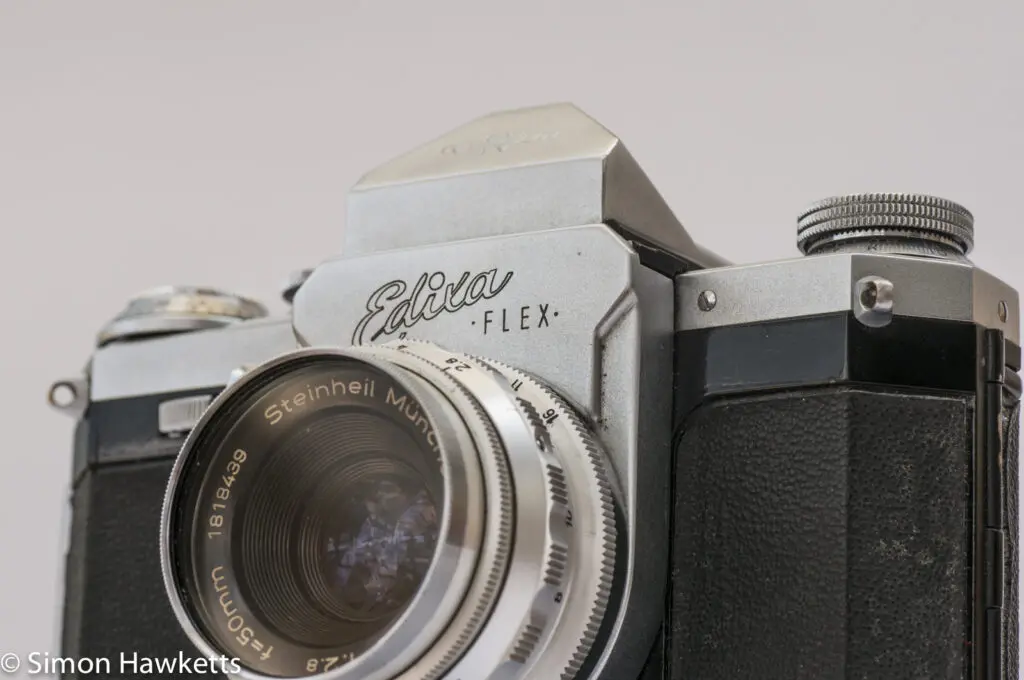
Description of Wirgin Edixa flex
This is a straight forward mechanical 35 mm SLR camera with no 'auto' features of any kind. In use, it reminds my of my Zorki 4k. I know that is a rangefinder, but the shutter and film advance has the same basic 'mechanical' sound of the Zorki. Also, the shutter speed dial turns as the shutter is cocked in the same way.
One of the nice features which I find useful in film cameras is the replaceable viewfinder. I have a large collection of Miranda cameras and all the Miranda range have removable replaceable viewfinders, so I was interested to see how this camera compared.
To remove the viewfinder, there are two small buttons either side of the eyepiece which are slid apart to allow the viewfinder to be lifted off the camera body. This is a system which keeps the viewfinder securely in place when locked, but it is harder to remove the viewfinder than any of the Miranda cameras I own. It's actually quite difficult to push the two buttons apart without using both hands, and that leaves nothing to remove the viewfinder with!
As with the Miranda series, waist level as well as eye level finders were made. I don't know if a metered version was produced, but I would expect so.
Once the viewfinder is removed, an advantage of this camera is the replaceable focusing screen. There is a small spring clip which holds the focusing screen in place, and a variety of different screens were available, including a split rangefinder type to assist focusing.
The screen fitted to my camera is of plain ground glass, which is refreshingly distraction free, but actually quite difficult to achieve accurate focusing with. There is a fair amount of dirt in my camera, but the fact that the screen is removable should make cleaning it easier than the Miranda's I've had to do.
The exposure system is completely manual. The photographer would need to take a light reading (or estimate with the sunny 16 rule) and then set the required aperture and shutter speed settings prior to making the exposure. When I thought about this, it brought home to me how much more rapid picture taking is today compared to 60 odd years ago. It would take several seconds to set the camera up and cock the shutter ready for the next picture.
Once the exposure settings have been transferred to the camera, the shutter needs to be cocked in order to focus the picture because this camera doesn't have an instant return mirror. This means the mirror remains up after you have taken a picture until you wind the camera on, ready for the next shot.
There is also no aperture control within the camera so if you want to stop the lens down, the picture in the viewfinder will get darker as you turn the aperture ring, not when you take the picture. Normally with this type of camera a preset lens would be used to allow the aperture to be pre-set to the required setting, opened up to the maximum for the exposure and then rapidly stopped down for the picture.
The lens fitted to this unit is an M42 screw thread Steinheil Munchen Cassar S 50 mm f/2.8 unit.
It's a very compact lens with an aperture range from f/2.8 to f/16 via a non-click ring on the front of the lens. I notice that the aperture ring moves with focusing, so since you would need to set the focus point prior to setting the aperture (for reasons explained above), you would then need to remove the camera from your eye to set the aperture, and then try to re-compose the picture with the lens stopped down. The focus ring goes down to about 3 feet, which is not a bad close focus distance, and the focusing action is quite smooth and even.
Some initial tests of the lens on my Sony NEX 6 suggests it may be quite sharp, so I'm going to run some more comprehensive tests with it later.
Overall, this is an interesting and somewhat stylish camera, although it gives the impression of being made a bit 'cheaply'. The metal used for the lens mount covering, and the camera bottom, is quite thin and has a few small indents in. Also, the film advance lever is made with pressed metal rather than a solid piece, so it all rather gives the impression of being made down to a price. The lens however looks rather nice, and I'm going to add Edixa to my list of eBay searches to see if I can pick up some other examples.
Edixa flex Specifications
- Wirgin Edixa flex 35 mm SLR
- Shutter 1/25 to 1/1000 + B
- Front mounted shutter release with lock
- X & M flash sync socket
- Removable / Replaceable viewfinder with eye level and waist level finders available
- Removable / Replaceable focusing screens
- Non-return mirror
- Steinheil Munchen Cassar S 50 mm f/2.8 M42 mount lens
- f/2.8 to f/16 aperture range.
- Multiple blade aperture (looks completely circular)
- Body Serial No: 197233
- Lens Serial No: 1818439
- Manual available on-line here
